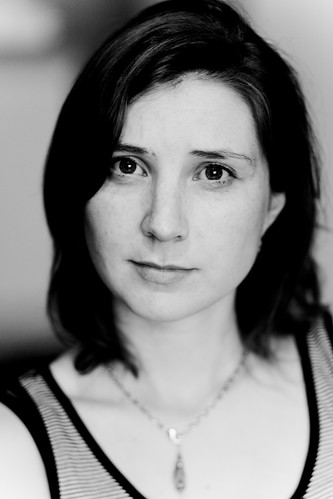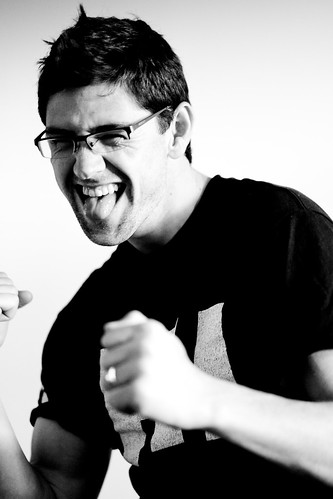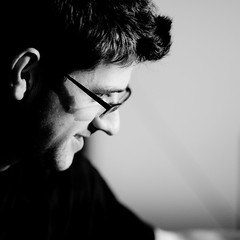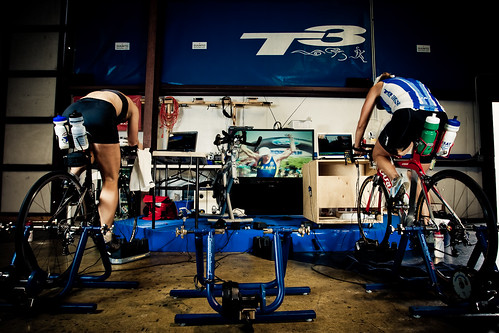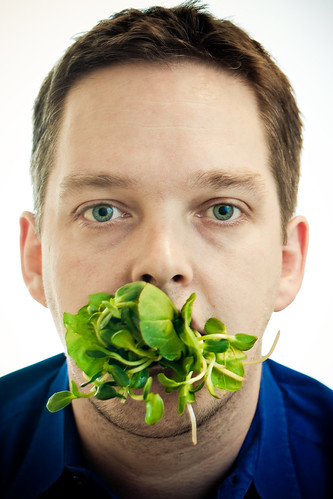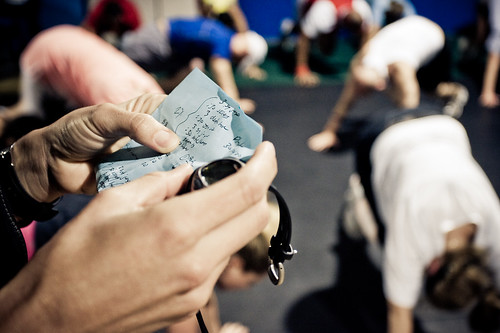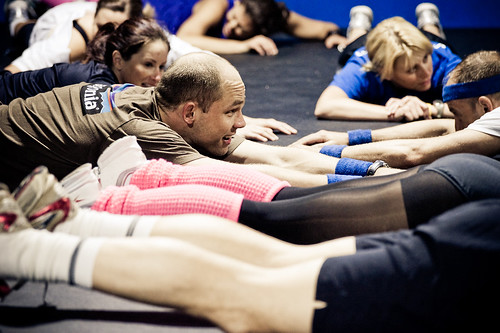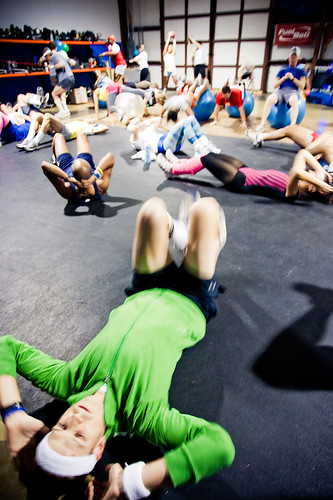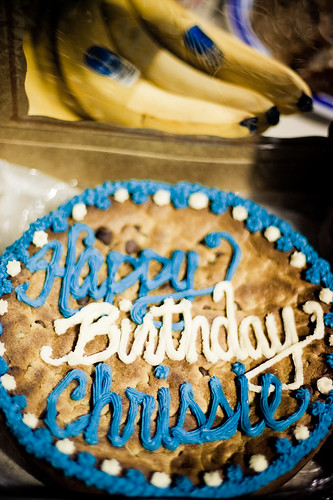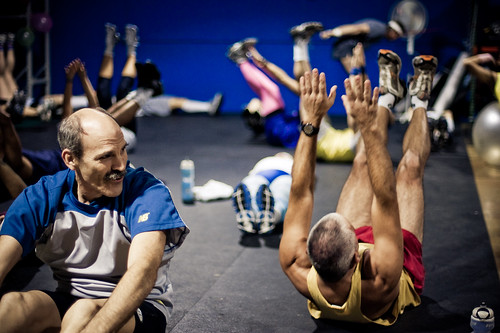Monday, April 20, 2009
Sunday, April 19, 2009
Twelve thoughts on PDF for Photography
About 12 days left until the first possible day to start a SoFoBoMo book for 2009. I've been sharing some email with Brooks Jensen, the editor of Lenswork, on his experiences with using PDF for photography. He was kind enough to write down some of his thoughts, that you may find useful. Brooks has been using PDF for a while, particularly for the publication of Lenswork Extended and has some intriguing ideas.
Twelve Thoughts on the PDF for Photography
As a creative artist, I reflexively resist any time someone tries to tell me what to do—so this article is not that. On the other hand, I've learned that learning from someone else's experience can be a valuable way to learn, in and of itself. So, with Gordon McGregor's encouragement, I offer a few thoughts from my experience as the publisher of LensWork Extended relative to the new medium of PDF publishing. It will, of course, be up to you to decide whether to follow the suggestions or consider them rules to be broken—with vigor!
- Monitors are horizontal (more correctly, landscape orientation), and so, too, should be PDFs. It's a ridiculous waste of screen real estate to make a vertical (portrait orientation) publication in a horizontal world.
- Use Acrobat's "full screen mode" for PDF publications. Why clutter up the screen real estate with software menus, scrollbars, and other superfluous visual clutter in a presentation like a publication of photography that is supposed to be visually sophisticated.
- In full screen mode, viewers will need navigational aids which you will have to provide them in your layout—next page, previous page, jump to another section, etc. This will take up screen real estate, but at least can be designed in any way you want, using any aesthetic you want, and fully integrated into the layout and design of your publication—a significant advantage when compared to the restrictions of the built-in software navigation menu bars and arrows provided by Acrobat reader. Don't forget that navigation can be transparent. With JavaScript, it can even pop visible on mouse-over!
- Speaking of remember navigation, that unlike physical books PDF is a nonlinear navigational challenge. There's no reason to think someone needs to view a PDF in page sequence—in fact there might be a great reason to assume that they won't. Be sure to take this into account when designing your PDF publication.
- In the nondigital world, it is universal that people will get close to a photograph or a book to see more details. In the PDF world, using the zoom tool, viewers can zoom in beyond anything imaginable in a photographic print. If you want them to have this ability, be sure to create your PDFs with enough resolution that allows people to zoom in without the images pixelating. Screens only need 72 dpi, but to allow for zooming, you might want to use 200 dpi instead.
- Unlike a physical book, PDFs don't have to consist of equal sized pages. Some pages can be vertical, some horizontal, some large, some small. What can you do with this idea?
- Obvious as it seems, PDFs are not books. It's best not to think of them as "digital books," but rather as their own unique publishing venue. So, think beyond the book; think audio, think video, think links, think links to the Internet, think layers.
- Speaking of layers, this is one of the most under-utilized and most interesting aspects of PDF publishing. If you create a layered document in InDesign, you can export the InDesign document to a layered PDF and then include hot buttons that turn off and on various layers. Think three-dimensionally.
- PDFs also break a temporal barrier. Unlike physical books, it's easy to update a PDF. Most commonly, updates would be some form of correction—fixing a typo, for example. But what about projects that incorporate a temporal update as part of the project? Maybe a story that unfolds over time? Rather than a publication date, what about publication range?
- To produce sophisticated PDF publications, learn about named destinations, bookmarks, buttons as well as links, renditions, the advantages and disadvantages of embedded versus linked media, page transitions, the document information dialog box, keyword searching, watermarks, opening parameters, password protection, full screen mode, tool tips, color management, and, if you're really adventurous, embedded JavaScript.
- Don't forget that the many sophisticated computer folks now use widescreen monitors—an unbelievable blessing for panorama format photography.
- Always embed fonts. Always embed fonts. Always embed fonts. If you can't embed fonts, convert them to outlines.
We are clearly in the early stages of learning how to use this new medium for the publication of photography, but what an exciting potential it has for the distribution of our work and for some very engaging and unique experiences for our viewers. For all you SoFoBoMo participants, good luck and have fun!
Posted by
Unknown
at
10:42 PM
5
comments
![]()
Wednesday, April 15, 2009
looking for help: white shade tent
Looking to see if anyone in Austin can lend me a white canopy/ shade tent. Wanting to borrow it for a couple of weeks, or at least on a couple of occasions in the next month. I'm looking for something much like this. The removable side walls would be a bonus, too. It being white is quite important - wanting to use it to take some pictures under, so other colours will cause problems.
If you have one, or know someone that might, please leave a comment, with contact info, or send me an email. Thanks!
Posted by
Unknown
at
11:04 PM
0
comments
![]()
Labels: Austin
Tuesday, April 14, 2009
computrainer
3 hours on a bike, with a simulation and video recording of the race. That gets you through about half of the course. The computer changes the resistance to match the hills on the real course, except you don't get to coast on the downhills.
Posted by
Unknown
at
12:03 AM
2
comments
![]()
Labels: everyday ironman, strobist
Sunday, April 12, 2009
fire at will
Spent about 30 minutes today trying to figure out how to trigger my 3 small strobes. I've got a bit of a mix of lights and triggers - 3 pocket wizards, two canon speedlites (a 580EX and a 420EX slave only/ TTL unit) and a cheap, second-hand Nikon SB28. I've also got a set of radio poppers (thanks to the guys at Tricoast) and a Canon ST-ET2 transmitter. A bit of a mess really. The problem is, I can't easily trigger all 3 lights at the same time. I can easily trigger pairs of them, using the pocket wizards, to control the 580EX and one of the SB28 or the 420EX. I can use the ST-ET2 to trigger both the 580EX and the 420EX, with or without the radio poppers in the mix to remove the need for line of sight. But I couldn't get all three to trigger at the same time. Eventually today I worked it out - but it is still a bit of a mess.
I was able to use the pocket wizards to trigger the 580EX, in master mode, that then triggers the 420EX. That works fine. Then if I add in the SB28, also triggered by the pocket wizard, all three only trigger, if the SB28 is out of sight of the other units. The 580EX seems to communicate/ trigger the 420EX within the white light flash output - I thought it might have been IR, but it doesn't seem to be. So the SB28 firing at the same time confused the 420EX in to not firing. The solution was to use the radio poppers to trigger the 420EX, covering up its control window with some duct tape, so that it only sees the control pulse from the radio popper. Not really ideal, but it seems to work at least for now. Next step is working out how to control the output power levels, but mostly I was interested in using the 420EX and SB28 as background/ edge lights in this arrangement, so the power levels aren't too much of an issue.
The alternative is just to buy some more controllable Canon flash units. Tempting!
Posted by
Unknown
at
3:40 PM
5
comments
![]()
Saturday, April 11, 2009
Engine 2
Well, Amanda and I have been on the Engine 2 diet now for almost a whole week. I'm continually surprised about how good the food tastes and how full I feel. So much so that it provoked me to make a self-portrait - something I haven't done for a while now. Inspiration is everywhere...
Posted by
Unknown
at
10:27 PM
2
comments
![]()
Labels: creativity, inspiration, portraits, strobist
Wednesday, April 08, 2009
infinite monkeys

Really a digital book represents a potentially infinite canvas to lay the images out upon. The screen can be a page, but it can also be a window. What happens if you open that window? Or if you break it? You could even just publish beyond a standard screen resolution, provide the highest resolution images possible and let the viewer decide how to experience your images. Zoom in. Zoom out, see details, take it all in.
Audio is a beguiling option, but perhaps it breaks the flow too much — causes an interruption that breaks the slow media aspect of absorbing all the senses that a photograph communications, through the eyes alone. Don't try to lay out your SoFoBoMo as a book, that is then poorly displayed on a screen. Instead, consider using the PDF to lay the images out optimally for an on screen display. Break the two page, odd, even print metaphor. Flow the images backwards. Use a diagonal arrangement. Up and down. Reverse direction along the way. Take a sharp right turn at an appropriate point in the story. Diagonals. Zig Zag across the canvas. Wavy lines. Choose what suits your images, let the form follow the function or the flow.
Physical books are great too — they have presence, weight, gravitas that a PDF can't reach. But it is so much simpler to get a PDF in front of a huge number of people around the world, quickly. The resolution is much higher on a page than a typical screen (5 or 6x as much) but that resolution is fixed — on a screen the resolution can be dynamic. Zooming is a feature, that can be used. Books have a huge bandwidth, but the latency is pretty bad. Digital books are the opposite. The physical size of the page is a hard limit with a particular book format. Not so for a PDF. Same way the flow is much more dictated by a real book. There is a lot of potential to design a PDF for SoFoBoMo that is a first class representation of your work, rather than just a stop-gap or a shadow of the real printed book you are going to make. It might be a horrible design decision, but then exploring new ideas is part of what SoFoBoMo is all about.
Posted by
Unknown
at
11:26 PM
5
comments
![]()
Saturday, April 04, 2009
somewhat conflicted
Bought two books this evening:

"Texas BBQ" (Wyatt McSpadden, John Morthland)

Seems like I'm a bit conflicted...
Posted by
Unknown
at
8:43 PM
2
comments
![]()
Labels: texas, thingumyjigs
Thursday, April 02, 2009
cut off an ear
Just finished listening to Jeff Curto's latest podcast on project discovery and planning. I have a lot of sympathy for the approach described, but I don't think it works too well, at least not for me. I have a long academic background and an engineering bent, so I'm very used to the sorts of techniques that Jeff describes. But I've tried them when it comes to being creative and coming up with photographic projects and always find myself going nowhere. For years I tried variations of this approach, making lists, planning audiences, working out what it was all about. I'd get to the end of that process and find I didn't have anywhere to go, nothing interesting to shoot or do.
In some ways, I think these processes try to model or force something that is really an emergent property. Things happen, ideas occur, making lists or drawing audience charts isn't likely to lead you to something original or entertaining, I think it'll just lead you somewhere you've been before. Something you've seen before. I think the reality is both a lot harder and much simpler. Ideas come about all the time - the trick is to be open and paying attention to them. Write them down. Capture things that you can't help but be interested in. Don't worry about an audience. In fact, that seems like the quickest way to kill it - worrying about who wants to see it, before you even know what it looks like. Create the pictures you can't help but make. Shoot the subjects that just won't get out of your head, whether you think anyone else in the world wants to see it or not. Find a passion and follow it. That one thing that you just can't get out of your head. The most painful question to read or hear asked of an artist is 'where do your ideas come from?' The answer is almost always the same - they have no clue and they come from everywhere, all the time. I think if you have ideas, you have ideas. I've talked to people about this - some people have them all the time, others almost never. Really I think that some people are tuned in to pay attention to the ideas they do have, while others don't pay attention or don't consider them worth thinking about, or classifying as an 'idea'. Or maybe it really is a totally different way of thinking that some people have and some don't. But if you have an idea, you'll know it. You won't be able to ignore it. You'll have to photograph it.
O. Rufus Lovett had that drive, when he kept going back to Weeping Mary in Texas. My friend Karen had it when she moved from New York to a small country town for months to find out what makes it tick. You just have to find that thing that keeps tickling at the back of your head saying 'take my picture' then follow that voice. Audience be damned. If it is good enough, people will want to see it. Not because you made it for them, but because you made it for you. Passion/ obsession combined with voice or vision is what you need to find. I'm not sure that it comes on demand.
Paul will no doubt find this funny, given that he described my approach in much the same terms that I'm pointing out problems I have with Jeff's method. I suspect I'm somewhere between the two. Paul likes to see the projects that have already happened, in his previous work - the truly emergent approach. Billie describes something similar when she references David Bayles &Ted Orland's book Art & Fear and learning from the work itself. I still try to have some structure - in fact I've got most time for the idea of a mission statement for a project. But really I think it should be a mission question - what's the driving question that you are trying to explore or answer. A statement seems too final - too preconceived. The pictures already planned and storyboarded. A question, like Tharp's spine, is the thing that you can keep coming back to, to guide the project along. Maybe it isn't even visible at all in the final images - it doesn't have to hit people over the head immediately. But the question or the spine helps keep you on track. A mission statement again seems to be too defining in the direction that will be followed, the pictures that will be taken, too much pre-planning, pre-visualising, not enough response to what's in front of you.
I went to a talk by Ed Ruscha this evening. The most useful and inspiring comment was when he was asked what advice he'd give for how to be an artist, and he responded with a Max Ernst quote, along the lines of 'cut off an ear'. I think that maybe neatly sums up the whole thing. Creativity happens. Ideas happen. Art happens. It maybe isn't found in questions and charts and graphs and planning. It isn't that easy and it isn't that hard. It just is. You can look back at what worked and try to codify it, but that doesn't mean you can repeat the same steps again and end up with a similar result.
What do you think about this? Where do your projects come from?
Posted by
Unknown
at
9:19 PM
2
comments
![]()
Labels: books, creativity, projects, sofobomo

